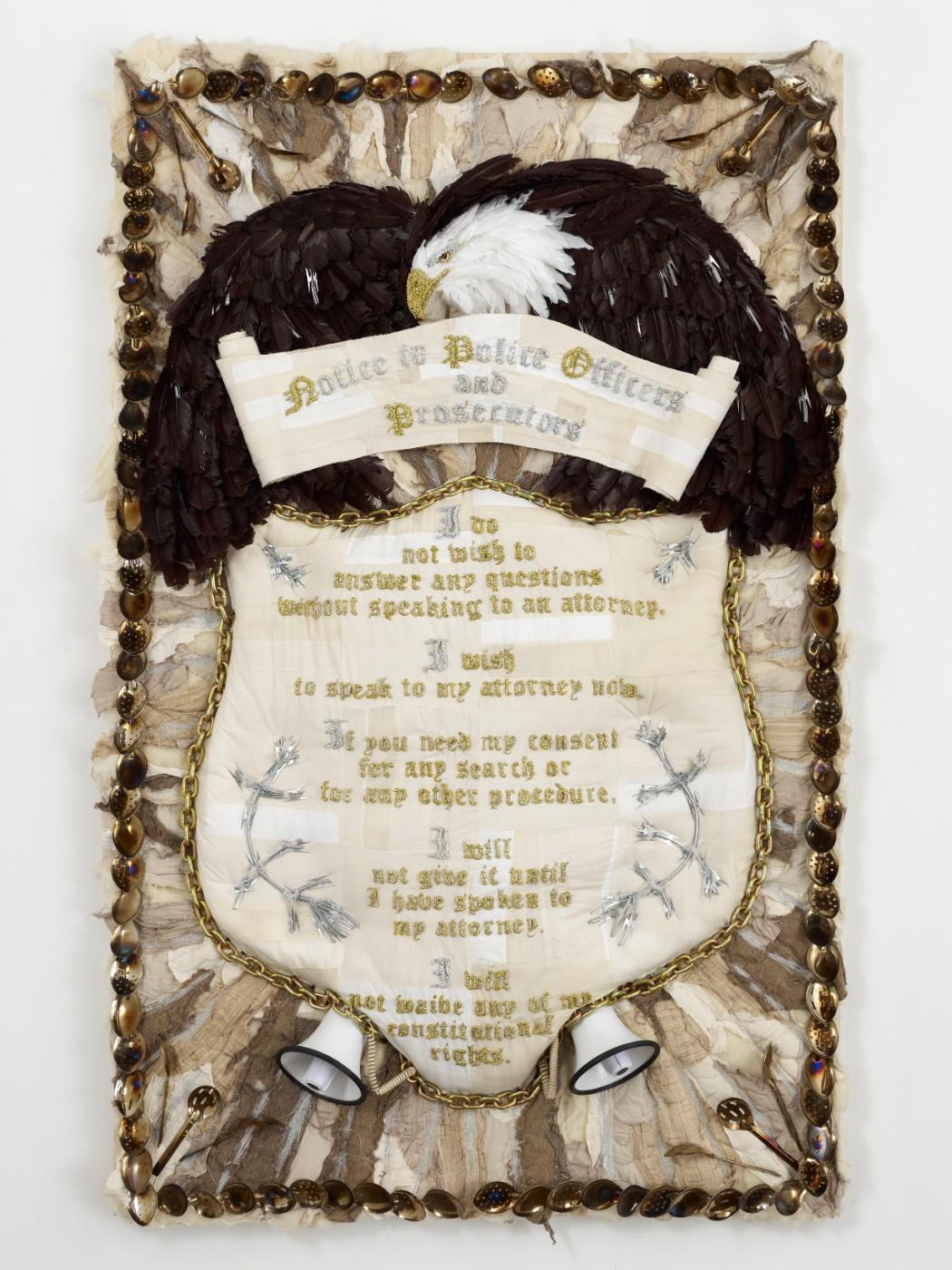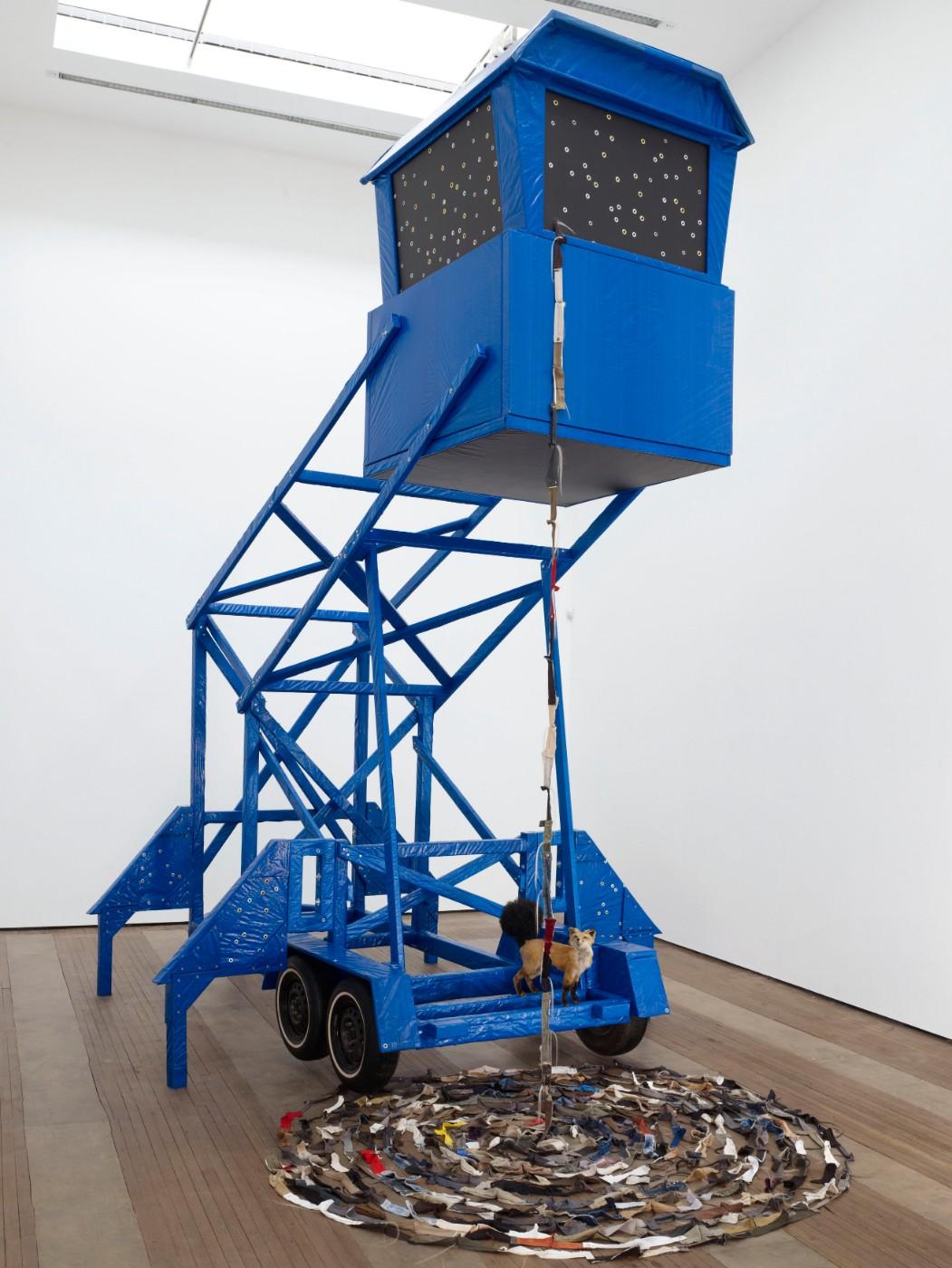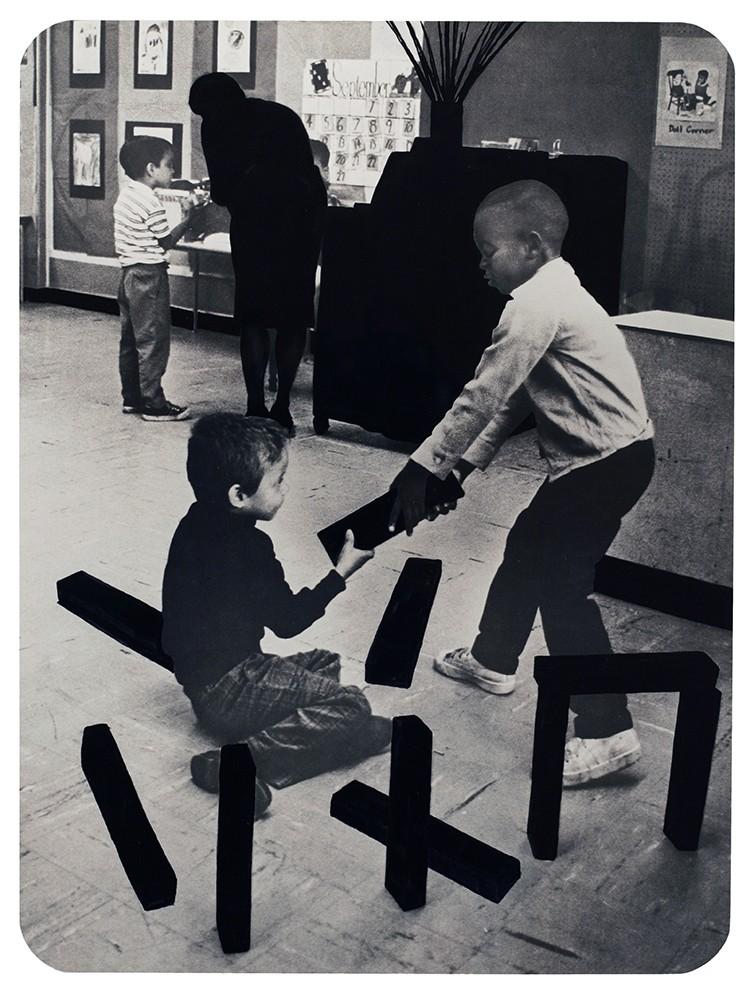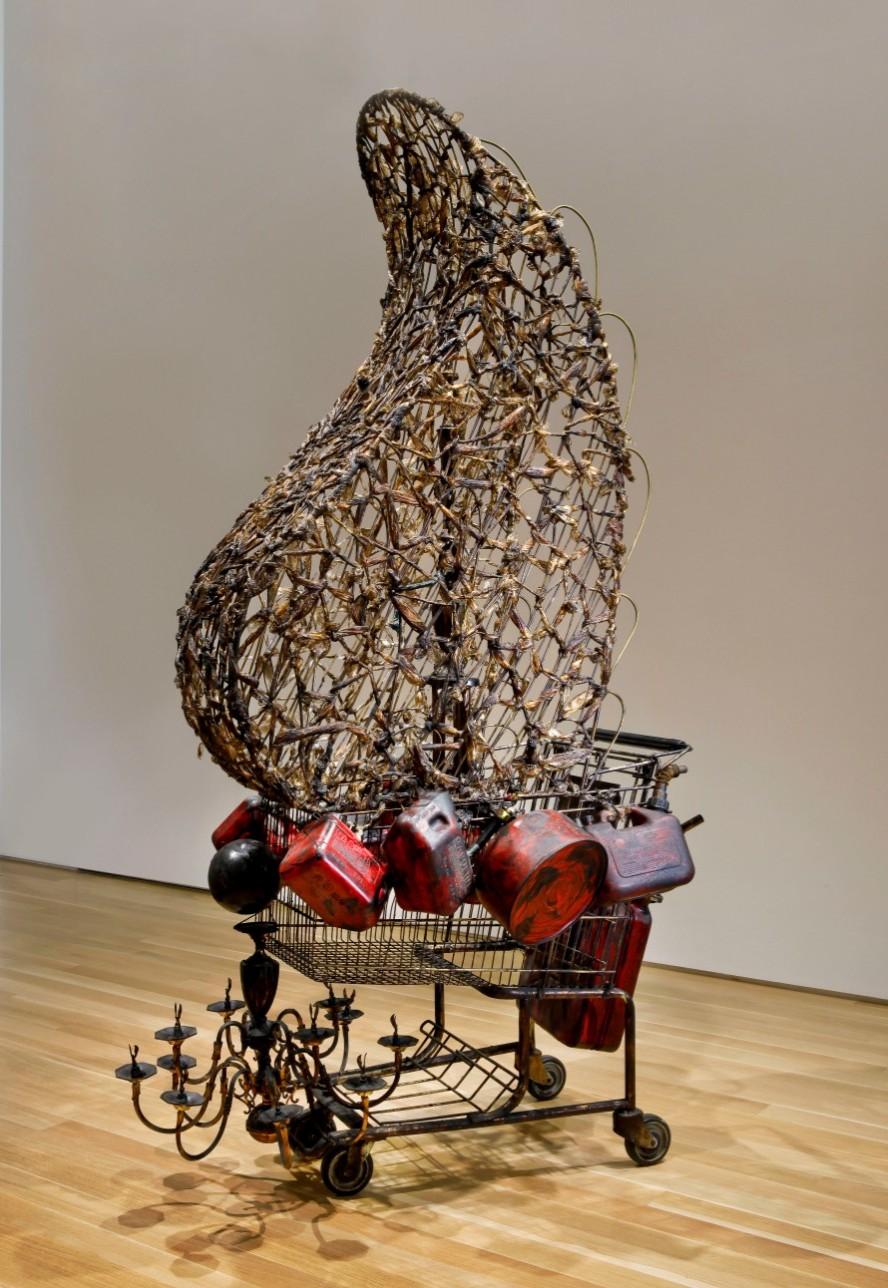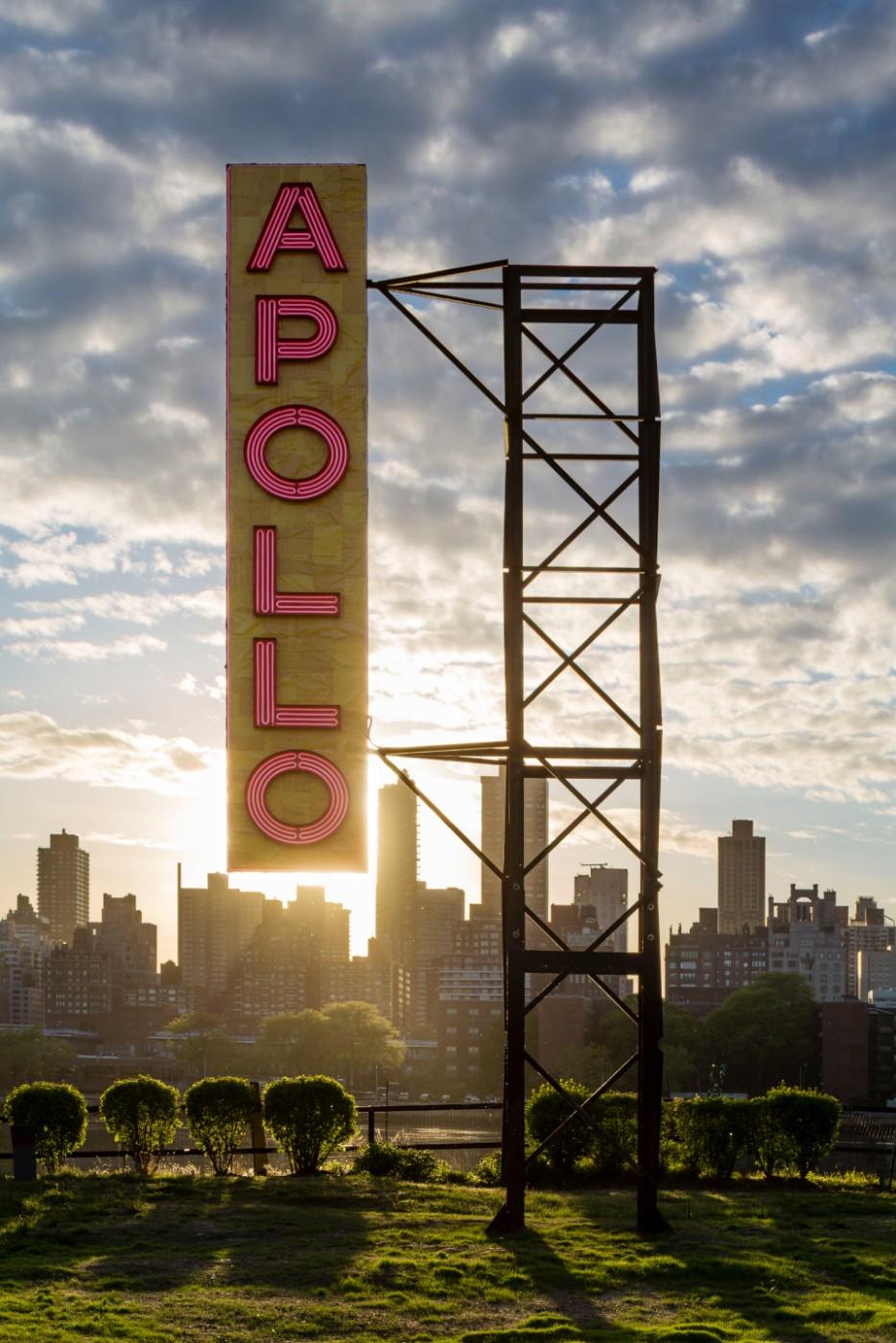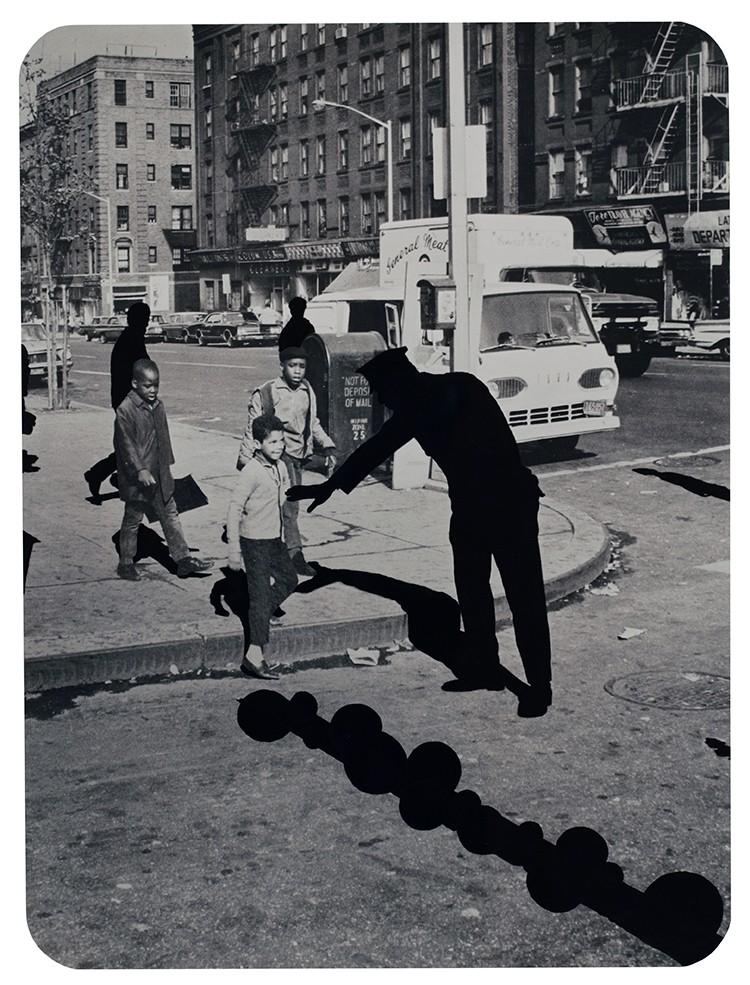Ward’s skill at making a simple yet powerful and emotional critique is apparent throughout the exhibition. He is able to discuss larger issues while keeping the individual lives present in our minds. This is particularly true of his installation Amazing Grace (1993), in which a path of firehoses draws us through a crowd of abandoned baby strollers while Mehaliah Jackson sings Amazing Grace on a loop. Made from objects found in Harlem and Manhattan, the installation hints at tragedy, evoking a sad nostalgia for the past, reminding us of our own unique childhoods, and that we all have pasts that we’ve left behind.
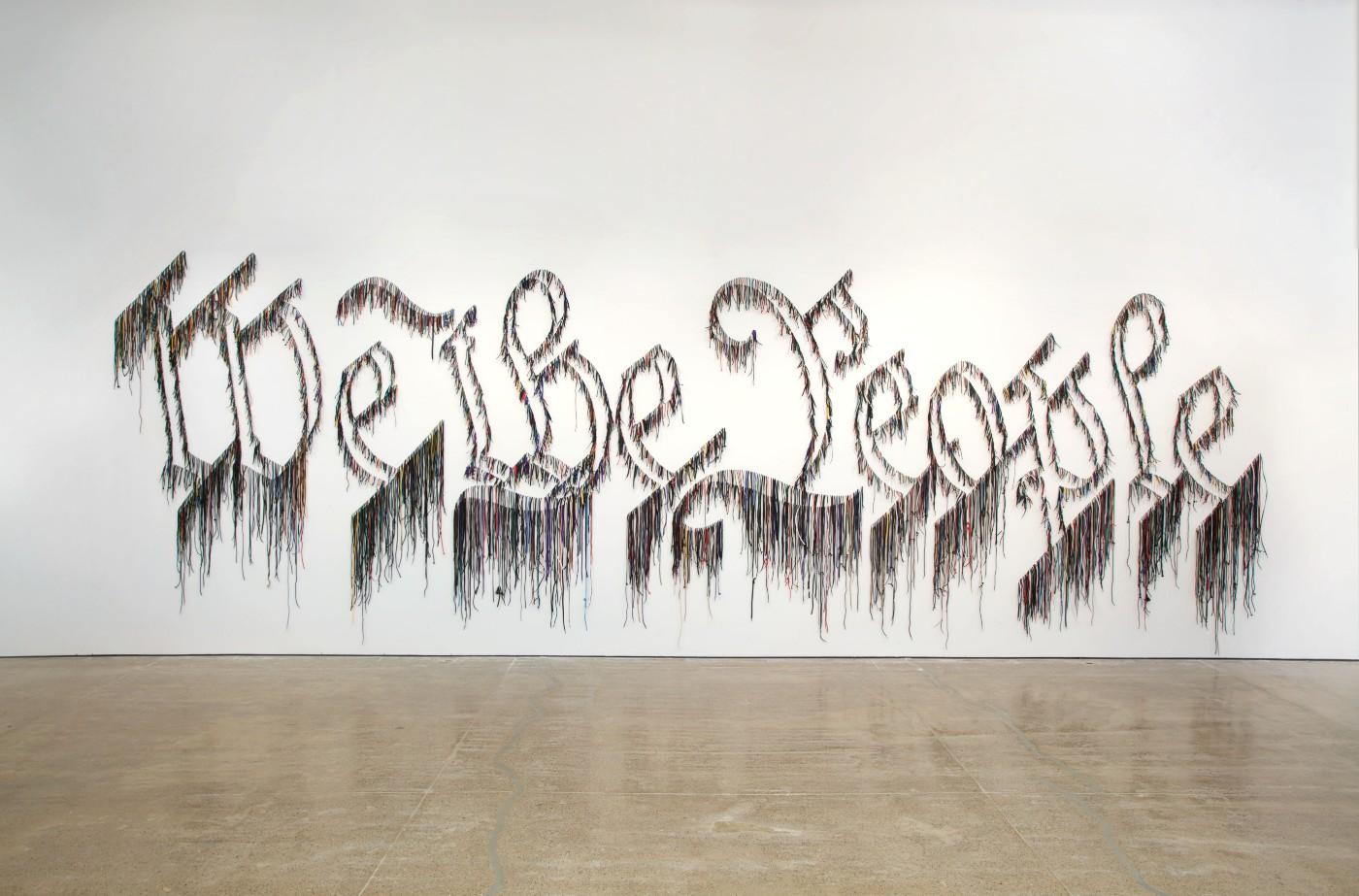
Nari Ward, We the People, 2011. Shoelaces. In collaboration with the Fabric Workshop and Museum, Philadelphia. Collection Speed Art Museum, Louisville, KY; Gift of the Speed Contemporary, 2016.1.
Sculptor Nari Ward brings his perspective on the American experience to the New Museum this week. Ward, who was born in Jamaica, has lived and worked in Harlem for much of his twenty-five-year career. We The People is the first museum survey of his work and brings together over thirty sculptures, paintings, videos, and large-scale installations from throughout his career. Using primarily unconventional, found materials, Ward creates often intricate works that address themes of American identity and life in New York: democracy, gentrification, racism, nationalism, immigration, history, and the ways they intersect to form the complex social issues we face today.
The show’s titular work, We The People (2011), sets the tone for Ward’s exploration of the American experience. Spelled out in drooping shoelaces across a full wall are the familiar first words of the Preamble to the Constitution. Though the words are massive and comfortingly familiar, the phrase appears to be in tatters, once in bold type, but now disintegrating off the wall. When we examine the piece more closely, we are enveloped by the multitude of shoelaces that make up the text, all in different colors, textures, sizes, and materials. We are reminded of the many lives and experiences that comprise America, and that though We the People may seem to crumble off the wall, the diverse souls behind it are still beautiful and standing strong. We the People is, like America, a mosaic, and depending on how you look at it, is either falling apart or being built up by its many different components.
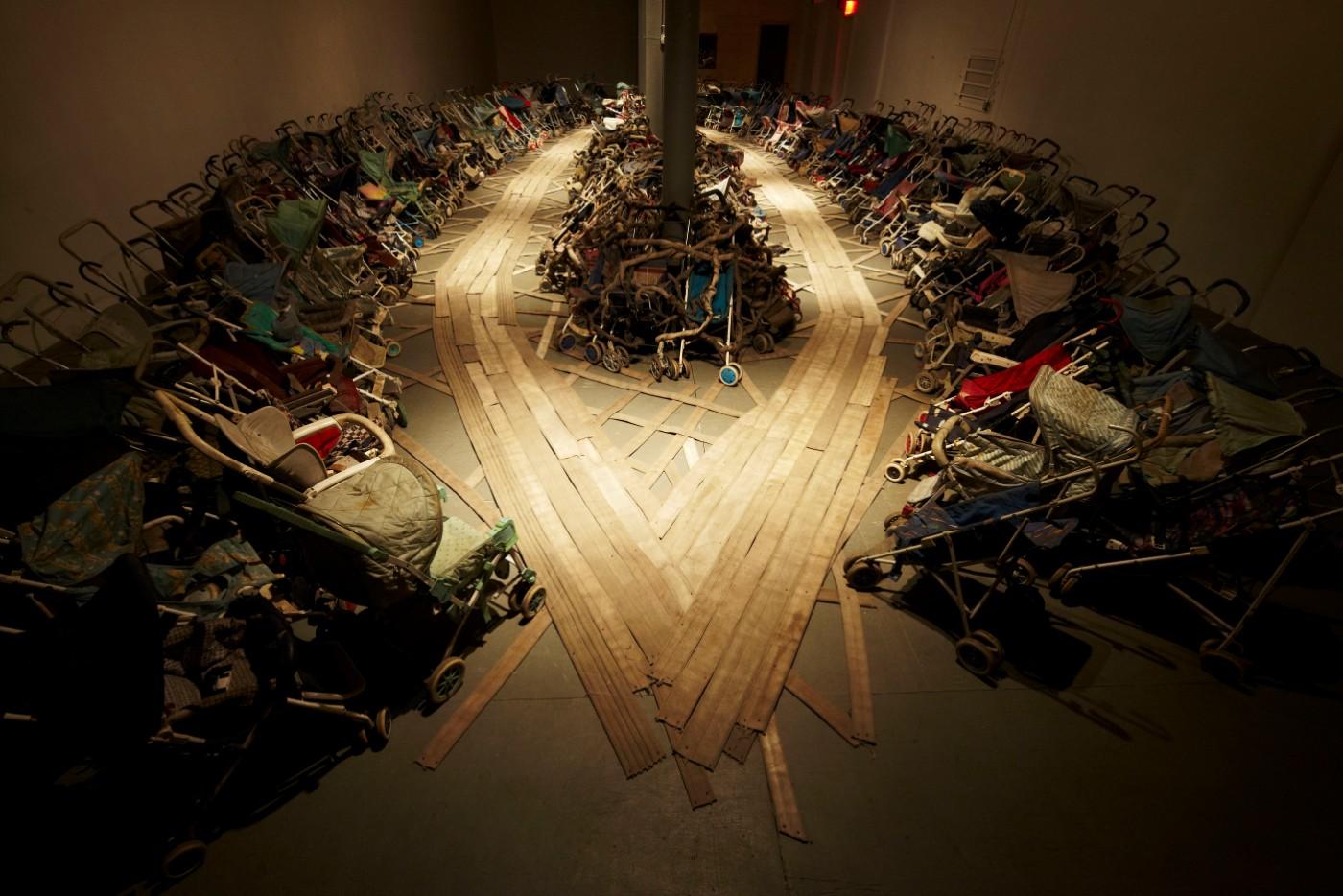
Nari Ward, Amazing Grace, 1993. Approx. 300 baby strollers and fire hoses, dimensions variable. Installation view: “NYC 1993: Experimental Jet Set, Trash and No Star,” New Museum, New York, 2013.
Ward frequently engages with history in his works as a way of critiquing the present. Through this holistic approach and his reuse of familiar objects, he is able to poignantly speak to such important topics as race and immigration, allowing us to feel them intimately rather than just engaging intellectually.
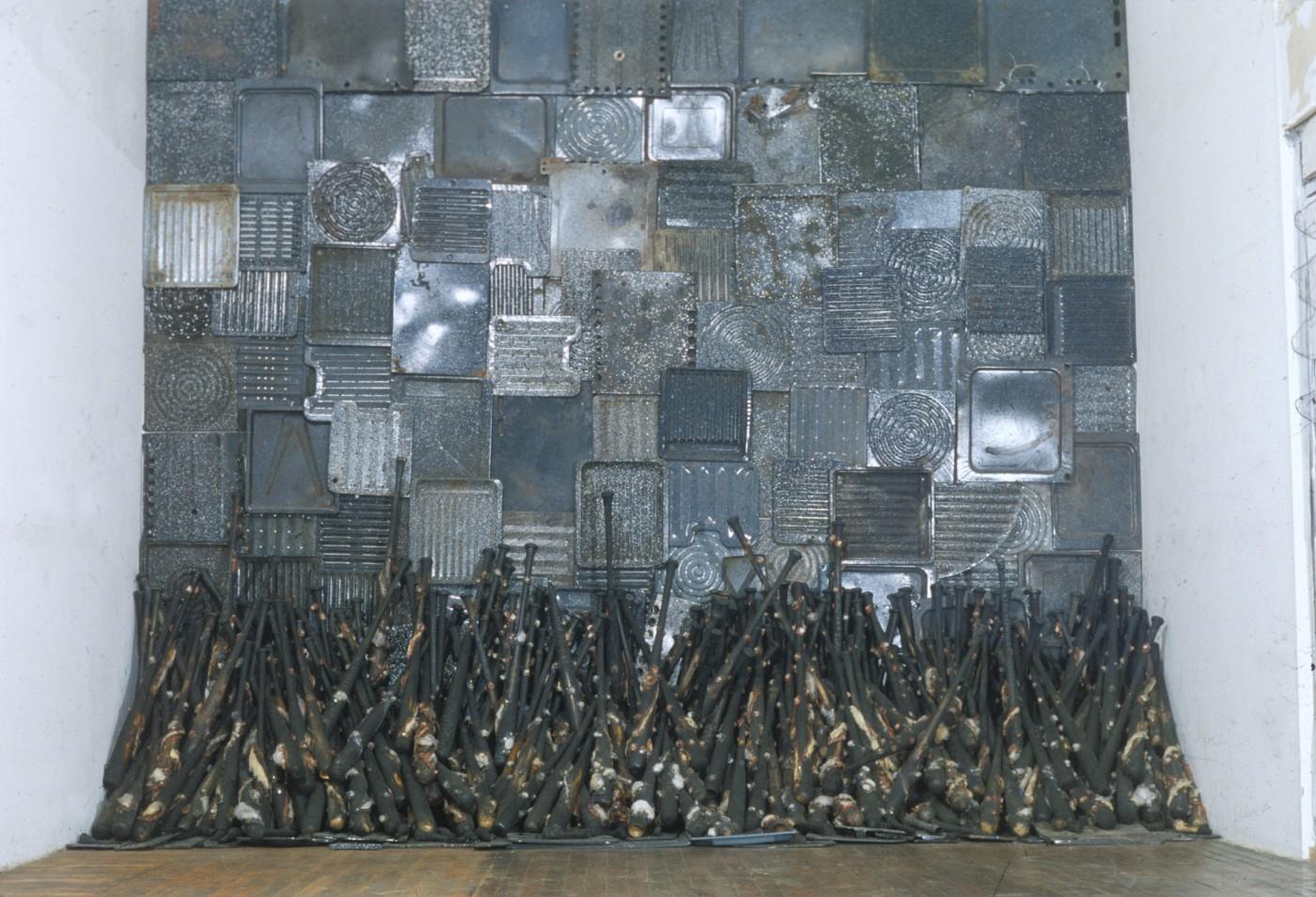
Nari Ward, Iron Heavens, 1995. Oven pans, ironed sterilized cotton, and burnt wooden bats. Installation view: “Nari Ward: Sun Splashed,” Pérez Art Museum Miami, 2016. Collection Jeffrey Deitch.
Nari Ward: We the People is on view at the New Museum through May 26, 2019.




